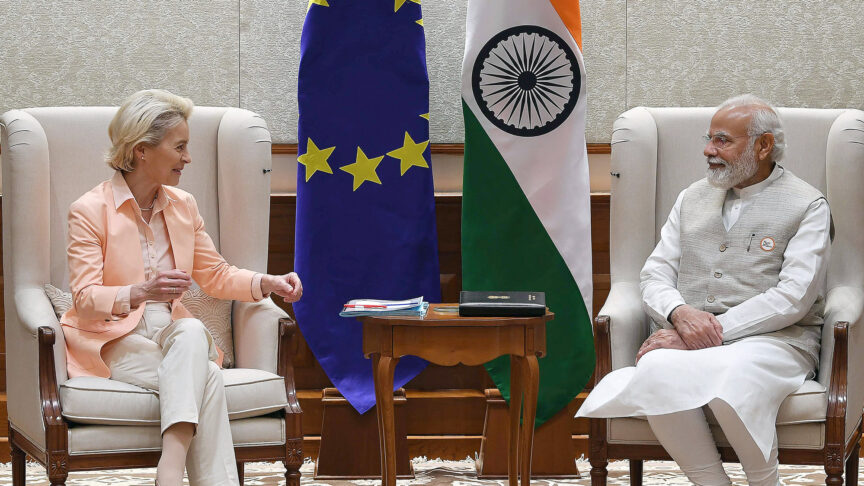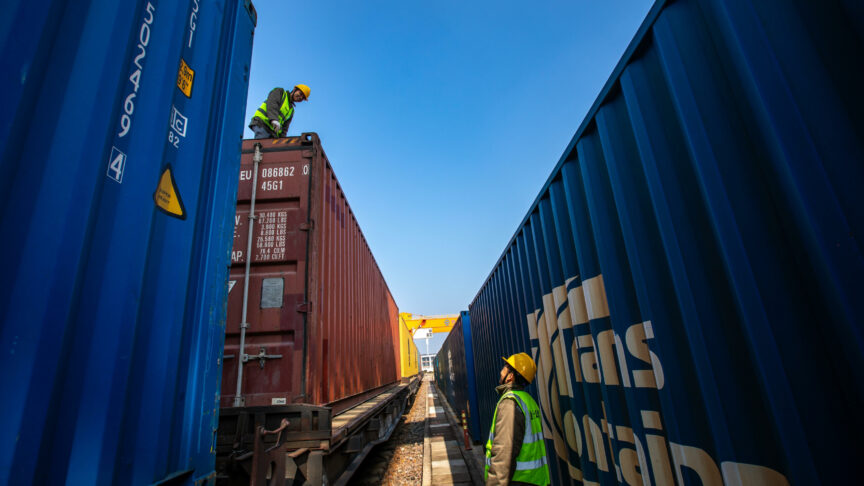China’s actions, India’s worries
Will relations between China and India in the 21st century be defined by co-operation or conflict?
Will relations between China and India in the 21st century be defined by co-operation or conflict? President Xi Jinping has now been in power for three years and Prime Minister Narendra Modi in power for a year, but the answer to the question remains unclear. Although China and India have not gone to war between since 1962, they have been embroiled in a territorial dispute over their border ever since. Border skirmishes continue to flare up – even during Xi’s maiden trip to India in September 2014. Not the first time, India is worried about China’s actions. Indeed, a 2013 poll from the Lowy institute found that a majority of Indians – 83 percent – consider China a security threat .
As well as the border dispute, India worries about China’s increasing presence in the Indian Ocean – especially since China started funding and building several ports on the coasts of Pakistan, Sri Lanka, and Bangladesh. There is uneasiness in India regarding these ports, railways, and economic corridors, and uncertainty about the geopolitical implications of China’s new infrastructure links. In the view of some Indian analysts, the “string of pearls” is supposed to be a network of bases linking strategic sea-lanes around India. Prior to his visit to China, Modi embarked on a tour across the Indian Ocean taking in the Seychelles, Mauritius, and Sri Lanka, in a move one analyst we spoke to perceived as an attempt to “neutralize the pearls of China”.
A majority of Indians – 83 percent – consider China a security threat
China’s “pearls” are now part of its grand Silk Road initiative, which is planned to stretch over the Eurasian continent, via South Asia and the Middle East, towards Africa, and Europe. The Silk Road includes a continental route (the Silk Road Economic Belt) and a maritime route (21st Century Maritime Silk Road), which passes through the Indian Ocean right under India’s nose. “India has been caught off guard with China’s New Silk Route” as one Indian analyst recently told us. While India was quick to join China’s initiative to create the Asian Infrastructure Investment Bank (AIIB), the Silk Road initiative is yet to be discussed between India and China.
But Chinese efforts to gain access to the Indian Ocean are not new and include their well-established relationship with Pakistan – a traditional thorn in India’s side – and the development of port of Gwadar on the Arabian Sea in particular. China has been building and developing this port in Pakistan since end of the 1990s, and is expected to spend more than $2 billion on construction and development. Concerns over Gwadar are, however, partially assuaged by the Indian-led development of the port of Chabahar in Iran on the Persian Gulf. In 2002, India started its financial and technical assistance to the construction of the port, and has signed a Memorandum of Understanding in May 2015, to invest in further development of the port. Roads are planned to connect the port with India through Afghanistan, and there is much hope in India, that Chabahar will serve as an alternative to Gwadar.
Chinese efforts to gain access to the Indian Ocean are not new and include their well-established relationship with Pakistan.
But recently, the Gwadar development has taken on a new salience, as it forms part of the China-Pakistan Economic Corridor (CPEC), itself now a component of the Silk Road Initiative. This corridor is designed to connect China’s western province of Xinjiang with Gwadar, by passing through Pakistan-administered Kashmir. Modi has objected to the project, calling it unacceptable, during his recent visit to China. However, while India is concerned that China’s Xinjiang-Kashmir-Gwadar linkage could have significant geopolitical implications, there seems a broad understanding in India, that “it [India] won’t go to war over this”, as one Indian expert told us.
Adding to the sense of Indian encirclement, is the deployment of Chinese submarines to the Indian Ocean in the last two years which has left some Indian observers doubtful as to whether these submarines are, in reality, intended to engage in counter-piracy operations off the Gulf of Aden.
Indians are increasingly concerned about China’s long-term objectives in the Indian Ocean, which they see as their birthright – “our legacy”, as one analyst put it. But despite these fears there is also awareness that China is far away from dominating the Indian Ocean. Analysts recognize that China’s attention has been mainly on the South China and East China Seas and that Indians are not, in the words of one expert, “losing sleep over” the Indian Ocean.
The disputed territory of Kashmir has been another long-standing issue between India and China, which last breached the surface when China took a neutral position on the 1999 Kargil conflict, when Pakistani troops crossed the border into Indian–administered Kashmir. Though China has never supported Pakistan militarily during its wars with India, it has provided more subtle and, arguably, more effective support.
Though China has never supported Pakistan militarily during its wars with India, it has provided more subtle and, arguably, more effective support.
In 2004, Pakistani scientist A.Q. Khan revealed that China had provided extensive support to Pakistan’s nuclear weapons program, which culminated in the successful nuclear weapons tests of 1998. China has also been the main sponsor of Pakistan’s nuclear power projects, and has built several (civil) nuclear power plants since beginning of the 1990s. And despite a lack of direct military intervention, Chinese support towards Pakistan’s military is substantial. In 2013, Pakistan emerged as the largest recipient of Chinese arms exports. Going forward, Pakistan is expected to purchase eight Chinese submarines, and another deal over four nuclear submarines is pending. Indian analysts that we’ve spoken to anticipate such a deal to go through, because “Pakistan wants India dead, and China wants India weak”.
If Indian analysts, by and large, believe that India and China won’t go to war over the Indian Ocean or Pakistan, some believe they might go to war over water. Indian analysts, most famously Brahma Chellaney, have warned that the race for water might eventually lead to a “water war”. China and India have a vastly increasing need for natural resources, and according to analysts like Chellaney, the demand for water is greater than any other resource. China, India, Nepal, Bhutan, and Pakistan are all trying to secure access to water sources in the Himalayas, and competing with dam-building projects. There is fierce competition to gain access to the Brahmaputra River, one of the major rivers in Asia, and concerns have increased since it appears that China is planning on diverting water from it. So far, there is no international law on water, and no immediate likelihood of an agreement to coordinate projects in the Himalayas. Only time will tell how and if China and India can overcome competition and coordinate their demand for resources.
In short, despite many areas of confrontation, open conflict between India and China war is highly unlikely in the near future, not least of all because cooperation is more profitable for both sides. Economic cooperation is a win-win: India needs Chinese investment, China sees in India an opportunity for growth. How far such cooperation between the two rivals can go is another question.
Part 2 of this analysis will focus on areas of Sino-Indian cooperation and will be published on the 30th July.
The European Council on Foreign Relations does not take collective positions. ECFR publications only represent the views of their individual authors.


